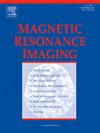一种用于MRI重建的双域生成器和边缘增强双鉴别器生成对抗网络
IF 2
4区 医学
Q2 RADIOLOGY, NUCLEAR MEDICINE & MEDICAL IMAGING
引用次数: 0
摘要
磁共振成像(MRI)作为医学成像的重要临床工具,需要较长的扫描时间才能产生高质量的MRI图像。为了加快核磁共振成像的速度,同时重建边缘更清晰、别名更少的高质量图像,提出了一种用于核磁共振成像重建的双域生成器和边缘增强双鉴别器生成对抗网络结构DGEDDGAN,其中一个鉴别器负责图像的整体重建,另一个鉴别器负责图像的边缘保存。为发生器设计了频域和图像域级联的双域U-Net结构。用密集连接残差块代替传统的U-Net卷积块,在克服梯度消失问题的同时提高了特征重用能力。在每个跳跃连接中采用坐标关注机制,有效地减少了空间信息的丢失,增强了特征选择能力。在IXI数据集和CC-359两个公开可用的数据集上进行的大量实验表明,该方法可以重建具有更多边缘细节和更少伪影的高质量MRI图像,在各种采样率和掩模下优于几种最先进的方法。单幅图像重建时间在13 ms以下,满足了快速处理的需求。本文章由计算机程序翻译,如有差异,请以英文原文为准。
DGEDDGAN: A dual-domain generator and edge-enhanced dual discriminator generative adversarial network for MRI reconstruction
Magnetic resonance imaging (MRI) as a critical clinical tool in medical imaging, requires a long scan time for producing high-quality MRI images. To accelerate the speed of MRI while reconstructing high-quality images with sharper edges and fewer aliases, a novel dual-domain generator and edge-enhancement dual discriminator generative adversarial network structure named DGEDDGAN for MRI reconstruction is proposed, in which one discriminator is responsible for holistic image reconstruction, whereas the other is adopted to enhance the edge preservation. A dual-domain U-Net structure that cascades the frequency domain and image domain is designed for the generator. The densely connected residual block is used to replace the traditional U-Net convolution block to improve the feature reuse capability while overcoming the gradient vanishing problem. The coordinate attention mechanism in each skip connection is employed to effectively reduce the loss of spatial information and enforce the feature selection capability. Extensive experiments on two publicly available datasets i.e., IXI dataset and CC-359, demonstrate that the proposed method can reconstruct the high-quality MRI images with more edge details and fewer artifacts, outperforming several state-of-the-art methods under various sampling rates and masks. The time of single-image reconstruction is below 13 ms, which meets the demand of faster processing.
求助全文
通过发布文献求助,成功后即可免费获取论文全文。
去求助
来源期刊

Magnetic resonance imaging
医学-核医学
CiteScore
4.70
自引率
4.00%
发文量
194
审稿时长
83 days
期刊介绍:
Magnetic Resonance Imaging (MRI) is the first international multidisciplinary journal encompassing physical, life, and clinical science investigations as they relate to the development and use of magnetic resonance imaging. MRI is dedicated to both basic research, technological innovation and applications, providing a single forum for communication among radiologists, physicists, chemists, biochemists, biologists, engineers, internists, pathologists, physiologists, computer scientists, and mathematicians.
 求助内容:
求助内容: 应助结果提醒方式:
应助结果提醒方式:


